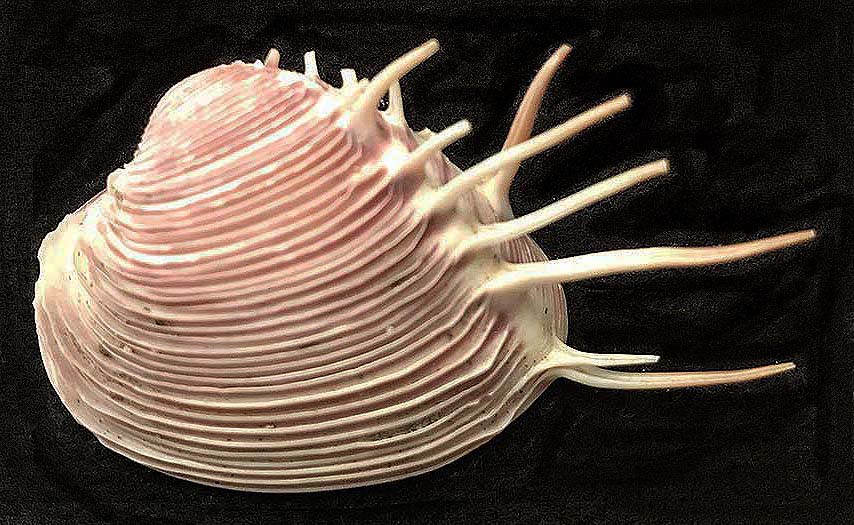The official name of this clam is now Hysteroconcha lupanaria (Lesson, 1831). Until recently, it used to be identified as Pitar lupanaria, but like many names of seashells, new information results in name changes. This clam belongs to the family Veneridae (the “Venus clams”).
Hysteroconcha lupanaria, which often reaches lengths to 7 cm or more, lives buried in sand on sand beaches and sand flats at depths of about 10 m in warm, shallow-marine waters from the Gulf of California in Baja California Sur, Mexico to northern Peru (Olsson, 1961; Parker, 1964). After storms, specimens of this clam are commonly found washed up along beaches. Unlike most venerid clams, H. lupanaria have two rows of long, slender, curved, spines along the posterior slopes of its two valves.
Hysteroconcha lupanaria is one of only a few venerids having long spines. They point upward and are very sharp. They surround the soft tissue of the siphons of the clam. These siphons are used for the intake of clear water and also for the expulsion of waste water. Apparently, the long and sharp spines protect the siphons from being nibbled on by fish.
The shell of H. lupanaria is white, tinted with violet and with violet spots at the bases of the spines.
Hysteroconcha lupanaria: exterior and interior views of the same left valve), 55 mm length (including longest spine).
Hysteroconcha lupanaria: right-valve exterior, 47.5 mm length (including longest spine). The color of this specimen is faded because of exposure to sunlight.
References:
Olsson, A.A. 1961. Mollusks of the tropical eastern Pacific. Paleontological Research Institution, Ithaca, New York, 574 pp., 86 pls.
Parker, R.H. 1964. Zoogeography and ecology of macro-invertebrates, Gulf of California and continental slope off Mexico. Vidensk. Medd. Fra Dansk Naturh. Foren, 178 pp.



No comments:
Post a Comment